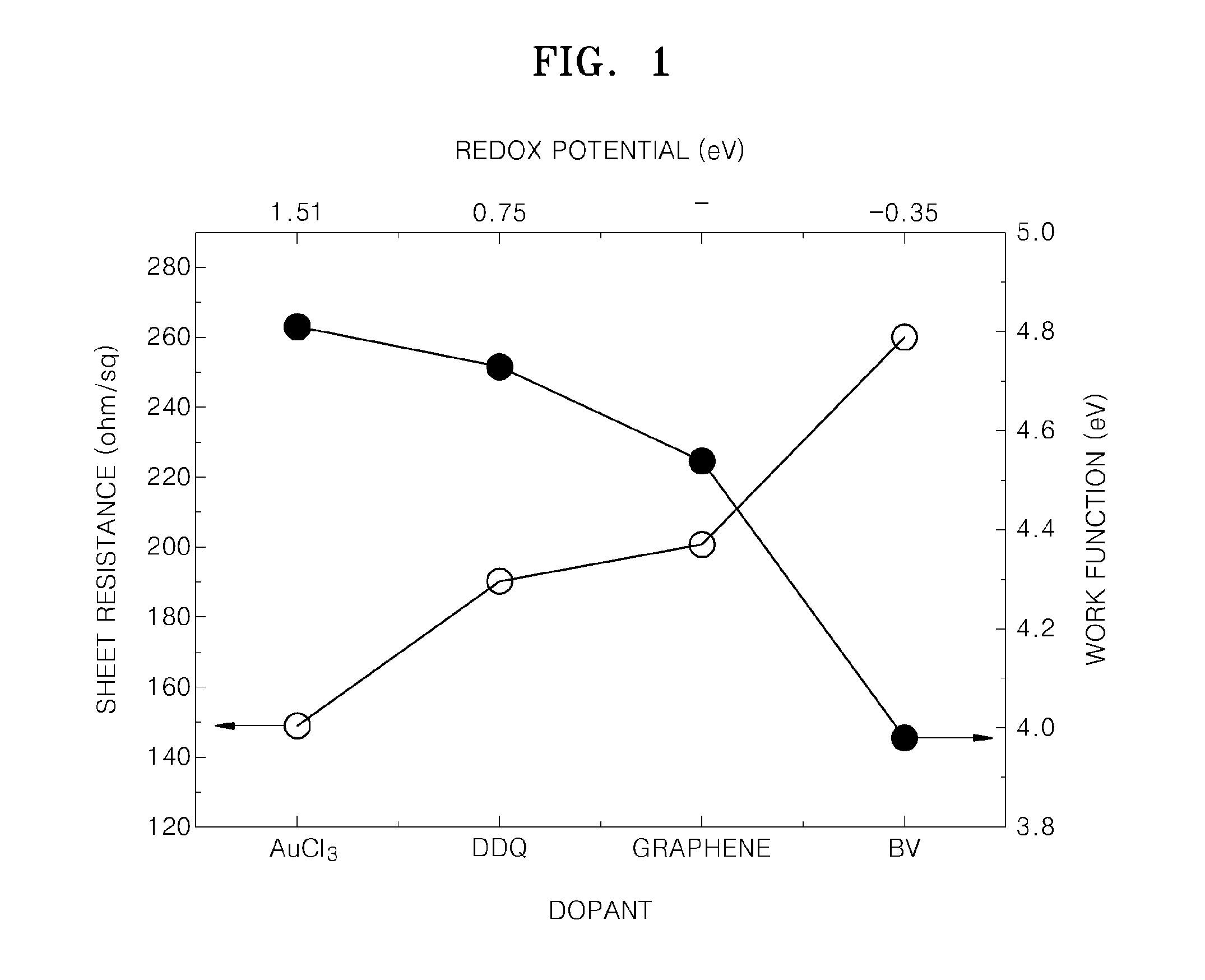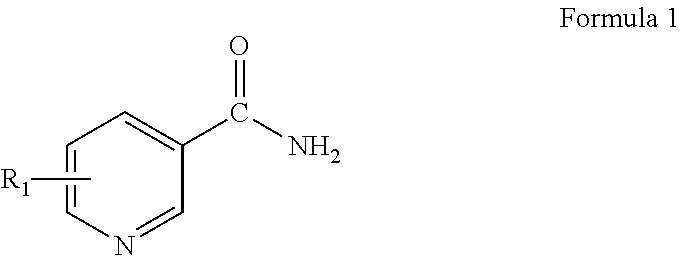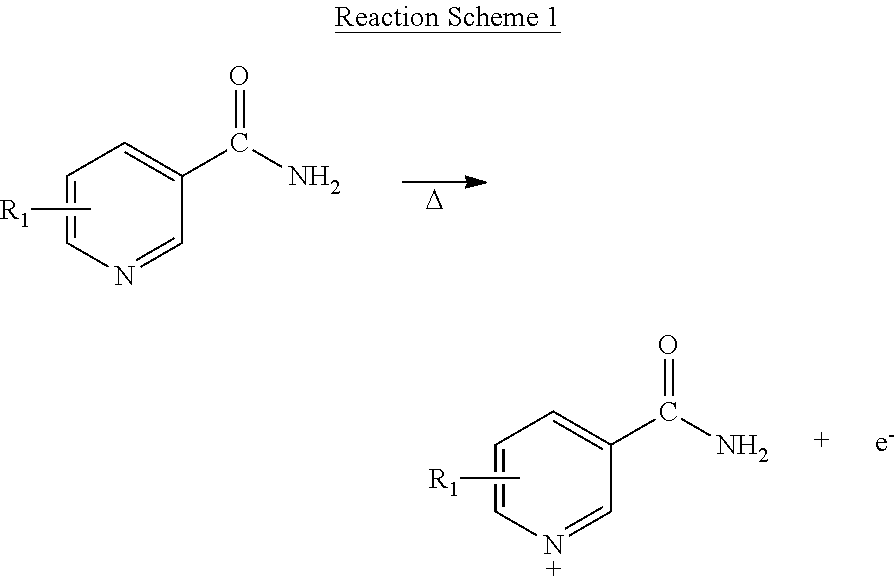Doped graphene, method of manufacturing the doped graphene, and a device including the doped graphene
a technology of doped graphene and manufacturing method, which is applied in the direction of non-metal conductors, conductors, metal/alloy conductors, etc., can solve the problems of difficult separation of single-walled carbon nanotubes, and high cost of carbon nanotube products
- Summary
- Abstract
- Description
- Claims
- Application Information
AI Technical Summary
Benefits of technology
Problems solved by technology
Method used
Image
Examples
preparation example 1
Preparation of Graphene
[0076]Ni was deposited on a 1.2 centimeter (cm) by 1.5 cm silicon substrate on which 100 nm of SiO2 was coated using sputtering to form a Ni thin film. The silicon substrate on which the SiO2 and the Ni thin film are formed was disposed in a chamber. Then, the silicon substrate was heat-treated at 400° C. for 20 minutes using a halogen lamp to form graphene on the graphitizing catalyst while uniformly adding acetylene gas to the chamber at 200 standard cubic centimeters per minute (sccm).
[0077]Then, the heat source was removed, and the chamber was naturally cooled to grow the graphene in a uniform alignment to form a 1.2 cm by 1.5 cm graphene sheet with 10 layers.
[0078]Then, a chlorobenzene solution (5 weight percent, wt %) in which poly(methyl methacrylate) (“PMMA”) was dissolved was coated on the substrate on which the graphene sheet is formed at 1000 revolutions per minute (“rpm”) for 60 seconds. The resultant was immersed in 0.1 M HNO3 for 1 hour to remove...
example 1
[0079]Graphene sheet films having a transparency up to 72% at 550 nanometers (nm) and prepared according to Preparation Example 1 were respectively immersed in a AuCl3 solution (10 millimolar, mM) as a p-dopant, a dichlorodicyanoquinone (“DDQ”) solution (10 mM) as a p-dopant, and a 1,1′-dibenzyl-4,4′-bipyridinium dichloride (“BV”) solution (10 mM) as a n-dopant, for 1 hour, and then washed with water and dried by spin coating.
experimental example
Identification of Doping Effect of Graphene
[0080]After doping the graphene, the physical characteristics of graphene were measured. The results are shown in Table 1 below.
TABLE 1DopantConcentration ofRedoxSheetHalldopant inpotentialresistancecoef.grapheneWorkUnitvolts vs SHEohm / sqm2 / C# / cm2functionAuCl31.5114925.92.43E+134.81DDQ0.7519030.62.04E+134.73None—20135.31.77E+134.54(puregraphene)BV−0.35260−29.7−2.10E+13 3.98(SHE refers to standard hydrogen electrode, eV refers to electron volts, ohm / sq refers to ohms per square)
[0081]The redox potential refers to the standard redox potential of each material for comparison with that of the graphene. The sheet resistance was measured using a 4-probe sheet resistivity measurement unit.
[0082]Referring to Table 1, the work function increased as the redox potential increased from negative (−) to positive (+). As shown in Table 1, the work function increased from 3.98 to 4.81. This indicates that the doped graphene may replace a metal electrode su...
PUM
 Login to View More
Login to View More Abstract
Description
Claims
Application Information
 Login to View More
Login to View More - R&D
- Intellectual Property
- Life Sciences
- Materials
- Tech Scout
- Unparalleled Data Quality
- Higher Quality Content
- 60% Fewer Hallucinations
Browse by: Latest US Patents, China's latest patents, Technical Efficacy Thesaurus, Application Domain, Technology Topic, Popular Technical Reports.
© 2025 PatSnap. All rights reserved.Legal|Privacy policy|Modern Slavery Act Transparency Statement|Sitemap|About US| Contact US: help@patsnap.com



